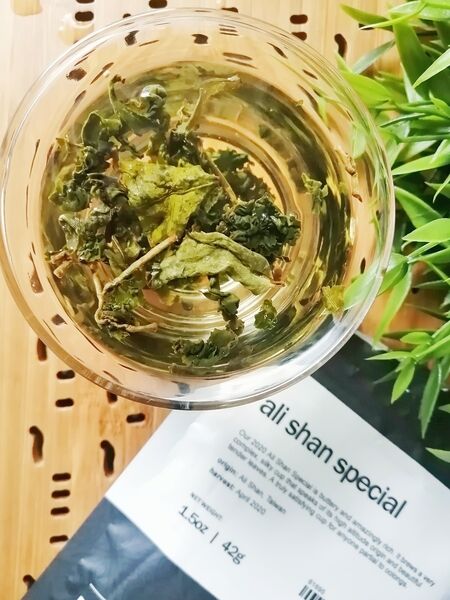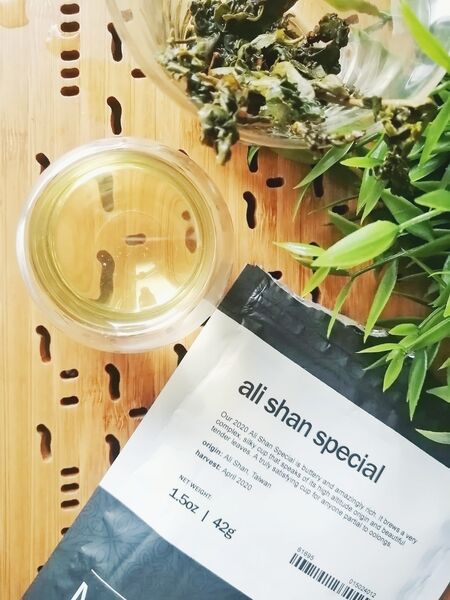Ali Shan Oolong: A Taste of High Mountain Tea


Fresh from Origin
Ali Shan is a mountainous township within Chiayi County, Taiwan. Located on the western coast of the island, it is home to Mount Ali, a region in Chiayi that encompasses approximately 25 individual peaks that extend up to an elevation of over 7,000 feet. It is often referred to as the gateway to high mountain Taiwanese tea referred to locally as Gao Shan Cha. Oolong teas surprisingly only makes up around 2% of global tea consumption. But Ali Shan tea ranks as the most consumed within that 2% because those who love Taiwanese oolong do so wholeheartedly because of just how unique it is. Tea has been cultivated in Taiwan for over two centuries and the earliest record of tea trees can be traced back to 1717, in what is present-day Nantou County.
Taiwan does have an indigenous tea plant that some regard as a third variety of tea, besides Assamica (Indian) and Sinensis (Chinese) varieties that currently dominate a lot of the worlds tea trade. The first teas cultivated in Taiwan were brought over by Chinese migrants from the Wuyi mountains. It soon became apparent that oolong was much better suited to the mountains of Taiwan resulting in tea becoming Taiwan's number one export by the 1800s.
Two of the most popular tea producing areas in Ali Shan are Zhong Shu Hu and Shi Zuo. Zhong Shu Hu has what can only be described as the perfect climate for producing Oolong because it has cool and damp air all year round, lying 1300 to 1800 meters above sea level and is usually covered in fog. However on the other hand Shi Zuo sits between 1300 and 1500 meters above sea level and has deep red soil that is rich in nutrients which also makes for excellent Oolong growing conditions. The tea strain, nutrients in the different kinds of soils, elevation, and climate all play a role and combine to produce incredible oolongs.
Flavor Profile
The high elevations, altitudes, topography and often extreme conditions can result in hardier teas that have a concentration of flavor, richness and smoothness. Lower temperatures and reduced levels of sunlight often stunt the growth of the leaves, concentrating the nutrients and producing a complex flavor profile and aroma. Ali Shan was once famous for fruit orchards but switched to tea production when it became more profitable, there are still a few orchards dotted around the area in between the tea farms which make up part of the terrier which intern can sometimes give certain Ali Shan oolongs a natural sweetness and hints of fruits like plums.
The stand out characteristics of Ali Shan High Mountain Oolongs are its complexity, floral notes and a naturally sweet, long-lasting aftertaste. The tea’s aroma will often have both herbal and floral elements that could be compared to flowers like orchids, jasmine, or yellow roses. The flavor profiles are equally complex and floral, sometimes with hints of fruit such as peach, plums, and lychees to name just a few. Ali Shan Oolong is usually produced using one of two cultivars: the Golden Lily (Jin Xuan - 金萱 Cultivar), which results in a tea with a creamy mouthfeel and notes of milkiness in its flavor profile, or the Qingxin (青心) cultivar, which often tends to produce a tea that is often bolder, sweeter, fruiter and more floral.
When they are roasted an extra layer of toasty depth is added to them but most Ali Shan oolongs are barely roasted or not roasted at all unless specifically requested, to preserve the greener, fresher and more vegetal notes. Producing these high mountain oolongs is incredibly labor intensive for the farmers and that is often why high-quality oolongs from these regions often come at a price.
How It's Made
Ali Shan is most famously known for their ball rolled, low oxidized greener oolongs and to get that trademark appearance to the leaves they are carefully pressed in cloth bags and rolled into balls often being rolled multiple times by machines that are set at different pressure levels until the desired shape is achieved. While these days machines are most commonly used, some producers will still use traditional processing methods and hand roll their oolongs making the processes, even more, labor intensive.
They are then usually fired to remove any remaining moisture and stop oxidation. Oxidation levels are what differentiate oolong tea from green tea, which is pan-fried immediately after being picked. The oxidation level also plays a huge part in the final flavor profile. A higher level of oxidation will produce a deeper and darker tea which is not the aim when it comes to Ali Shan oolong. Ali Shan oolongs are usually oxidized between 30%-40% which is on the light to medium end of the oxidation scale for oolongs.
They will then often go through a rigorous process and are often subjected to many quality controls to keep the tea of as high a standard as possible. Harvest usually takes place twice a year once in spring and once in winter and the levels are usually hand-picked due to the geographical makeup of the mountains making it harder to be able to use harvesting machines.
How To Brew
It is best to prepare almost all Ali Shan oolongs in a porcelain or glass gaiwan gongfu style to get the most of it and ensure you can explore just how much of a transformative flavor profile Ali Shan oolongs have.
My number one tip for preparing Ali Shan tea is to follow your heart, see the color of the liquid, take time to make your tea and you will taste a different beautiful flavor.
Where to Buy
Adagio Teas currently stocks one oolong from this region - Ali Shan. Master's Teas also has their own, called Ali Shan Special, which has a picking standard consisting of 2 to 4 young, hand-plucked leaves. Grown and produced at an elevation of 1200m by farmer Yu-Ting Chen who grew up in the mountains and started picking tea when they were a teenager and has continued to do so for 25-28 years. Getting to the tea garden at 5-6 am every day, taking only one break in the middle of the day and staying at the tea garden for weeding, fertilization and other steps until around 5 pm.
